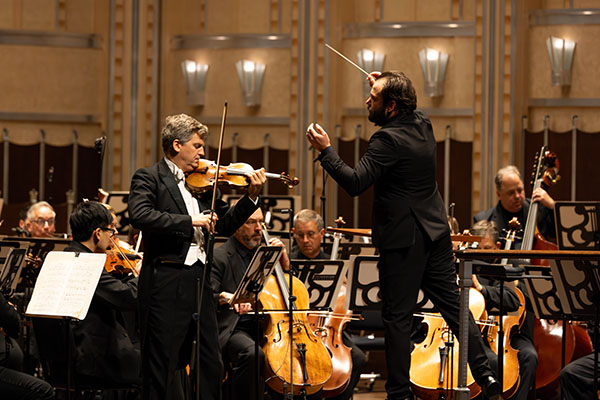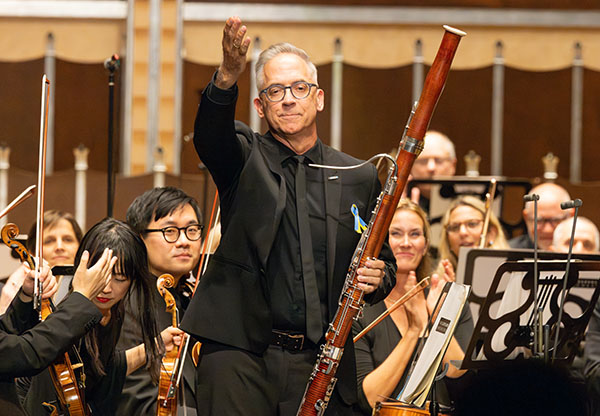Movie music has been cropping up on more and more Cleveland Orchestra programs in recent seasons — even when it’s not advertised.
This was all to the good at Severance Music Center on Thursday, July 25. The Orchestra sounded very much its polished self in the second concert of this year’s Summers at Severance series, the set of strictly classical offerings that the ensemble has brought back to balance out this summer’s lighter programming at Blossom Music Center.
All the same, summer was in full swing on Euclid Avenue. The front terrace outside Severance was strung with lights and set up with white tents serving refreshments. Thursday’s concert may have started with an old-school tone poem by César Franck and ended with Antonín Dvořák’s Sixth Symphony, but the piece that came between would have been right at home as part of a movie night at Blossom.
Erich Wolfgang Korngold’s Violin Concerto is a work that bridged classical composition and film scoring long before John Williams was a household name. With this piece, Korngold, an Austrian-Jewish expat who settled in Hollywood in the mid-1930s, sought to reconcile his classical training with his motion-picture career. He used melodies from several of his movie scores as the principal themes for the concerto, which otherwise proceeds in traditional fashion.
The first movement runs the gamut of virtuoso violin playing, from long lyrical lines to particularly punishing technical passages. If the sweep of the music is recognizably cinematic, it’s because many of Korngold’s favorite tricks — a sumptuous melody with one or two unexpected notes, sparkly orchestration that swirls among the instruments — have been adopted by subsequent generations of film composers, John Williams included.
James Ehnes, the evening’s soloist, kept a light touch throughout the performance, breezing through difficult sequences and lingering over moments of exquisite delicacy, such as the sustained high-register writing in the slow second movement. After the pyrotechnics of the finale, he still had enough energy for two encores: Eugène Ysaÿe’s splashy Violin Sonata No. 3 and the gentle, thoughtful Andante from J.S. Bach’s Solo Violin Sonata No. 2.
After intermission, Czech conductor Petr Popelka, making his Cleveland Orchestra debut with this program, stepped into the spotlight leading the Dvořák. The national character that the Czech composer would continue to develop in his later symphonies found some of its first expression here. The Sixth has a furiant for its third movement, a fiery folk dance that Dvořák would perfect in orchestral form with the scherzo for his Seventh.
Popelka commanded a vivid and rhythmic performance, and the Orchestra’s assistant principal woodwind players, all sitting first chair for the evening’s second half, contributed shimmering solos. Bassoonist Barrick Stees, who is retiring at the end of the summer and was giving his final concert at Severance on Thursday, received a special ovation at the front of the stage after the symphony.
The program opened with another orchestral showcase, Franck’s stirring and sensational Le Chasseur maudit (The Accursed Huntsman). The music tells the supernatural story of a horseback ride through hell, and in fifteen action-packed minutes — there are hunting horns, tolling bells, and plenty of sinister string effects — the score paints an almost living picture.
Photos courtesy of Kevin Libal/The Cleveland Orchestra.
Published on ClevelandClassical.com August 1, 2024
Click here for a printable copy of this article





